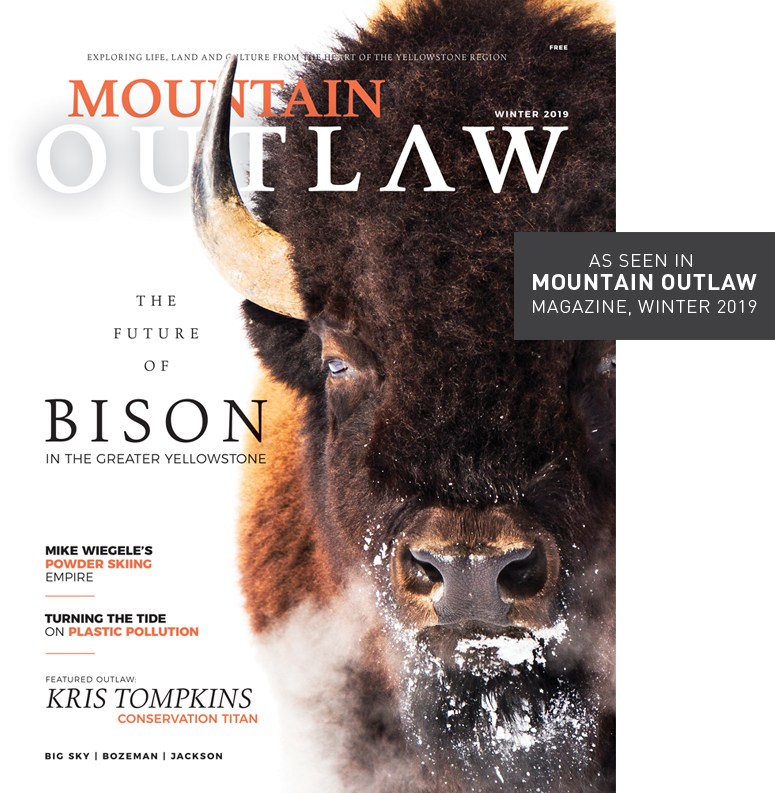Yellowstone’s commitment to innovative renewable energy.
Like the beating heart of an organism, the Lamar Valley has long been a source of restorative vitality for the Greater Yellowstone Ecosystem. The northeast corner of Yellowstone National Park is where American bison were rescued from near extinction in the western U.S. and where half of the park’s reintroduced wolf population now roams.
At the Lamar Buffalo Ranch, Yellowstone’s last remaining bison, estimated at 25 animals in 1901, were protected from poachers and bred with animals from private herds. Considered one of North America’s greatest wildlife conservation stories, the park’s bison population now numbers in the thousands, and the Lamar Buffalo Ranch earned its spot on the National Register of Historic Places in 1982.
While the Lamar Valley is a place to witness the Greater Yellowstone’s historical biodiversity, the Lamar Buffalo Ranch is becoming a showcase of innovations in sustainability that could be a glimpse of our future.
The historic compound is 10 miles from the nearest electric source and has long been powered by solar energy and a propane generator backup when the sun isn’t shining. A collaboration between the National Park Service and Yellowstone Forever, the park’s nonprofit education and fundraising partner, the Lamar Sustainability Project has emerged as an innovative commitment to get this off-grid location completely independent from fossil fuels and utilize it as a teaching tool for the potential of renewable energy.
The first phase of this project, designed by Toyota and Indie Power Systems, was installed in 2014 to store the energy harnessed by photovoltaic panels. The custom system involves 208 recycled Toyota Camry hybrid car batteries that are no longer fit for use in vehicles but still have power storage capacity. The installation includes real-time digital monitoring, both for energy tracking and for use as an educational tool. A micro-hydro system, installed in the summer of 2017, uses the domestic water infrastructure to augment the energy produced by the solar panels.
Sharp donated 176 photovoltaic panels—at 250-watts apiece—for the solar array, and Canyon Industries provided the micro-hydro system. A backup propane generator from Kohler supplements the renewable energy sources when the power demand is too great for the solar and hydro to keep up.
The goal of this cutting-edge system is to reduce fossil fuel use at the ranch by approximately 25 percent. Renewables are just one half of the puzzle for a carbon-neutral future, the other being energy efficiency.
“Our study shows that the right efficiency policies could alone enable the world to achieve more than 40 percent of the emissions cuts needed to reach its climate goals without requiring new technology,” said Dr. Fatih Birol, the International Energy Agency’s executive director, in an October 2018 press release. “Thanks to the critical importance of energy efficiency in building a secure and sustainable future, the IEA considers it the ‘first fuel’ and facilitates the exchange of best practices among advanced and emerging economies.”
The ranch consists of a log barn, horse corral, numerous cabins and out buildings, as well as the Buffalo Keeper’s House, constructed in 1915, and used as a year-round residence for Lamar River District Rangers. The log building has no insulation under the floor, nor a crawl space to access the water pipes, which winter temperatures can freeze quickly. The walls are poorly insulated, and the existing windows are prone to cold drafts and heat loss.
The current phase of the Lamar Sustainability Project looks to address these efficiency issues. A major renovation is underway which could save more than 2,800 gallons of propane and $5,600 in energy costs annually. This will have a significant effect in reducing the energy demand on propane appliances, such as heaters, as well as the renewable energy system.
Thanks to a donation of spray foam insulation from the Huntsman Corporation, based in Texas and Salt Lake City, the project is currently out to bid, and the Buffalo Keeper’s House renovation should complete by spring 2019.
“We’re going to bring that structure in line with current building practices, so we don’t have a huge drain on the renewable energy that we’ve implemented there,” said Jeff Augustin, Yellowstone Forever’s senior director of park projects, adding that they’ve already retrofitted a few of the residential structures and a bath house at the ranch.
And the progressive energy projects at the Lamar Buffalo Ranch go beyond addressing climate change and economics. The project is also incorporated into the Yellowstone Forever Institute’s educational curriculum for the 1,800-plus annual participants that come to the ranch for field seminars in native culture, art, wildlife biology and resource ecology, including the fourth- through eighth- grade students hosted as part of Expedition Yellowstone’s outdoor classroom.
These students will learn that there are other options for energy production in the future, and Yellowstone Forever and its partners can show them what that looks like.
Yellowstone Forever is the park’s nonprofit education and fundraising partner. Visit their website for more information: www.yellowstoneforever.org

